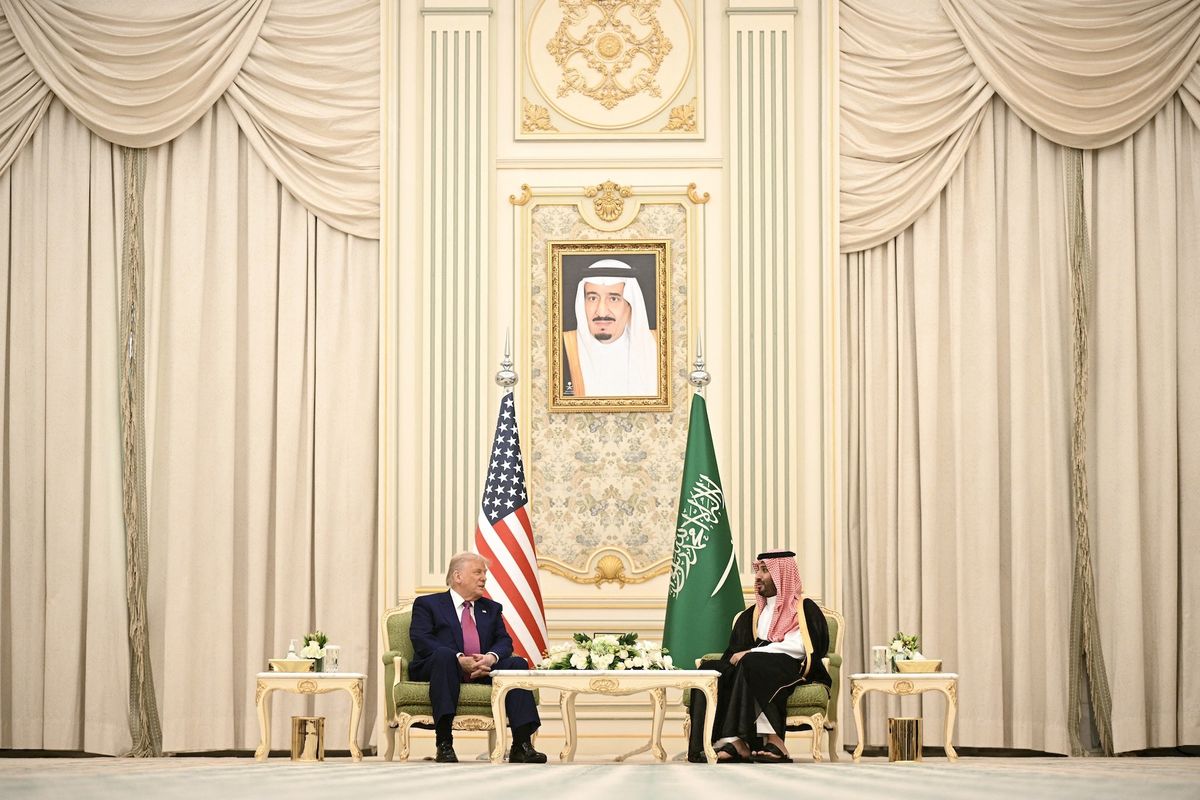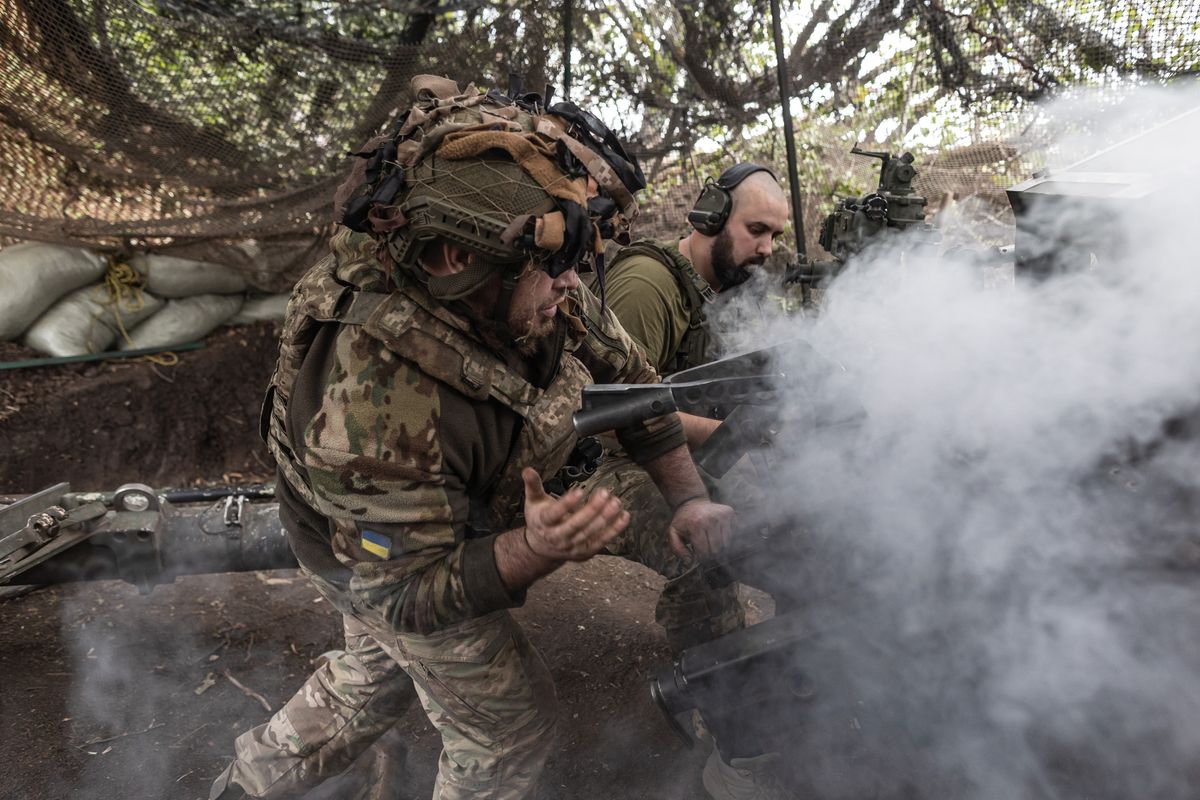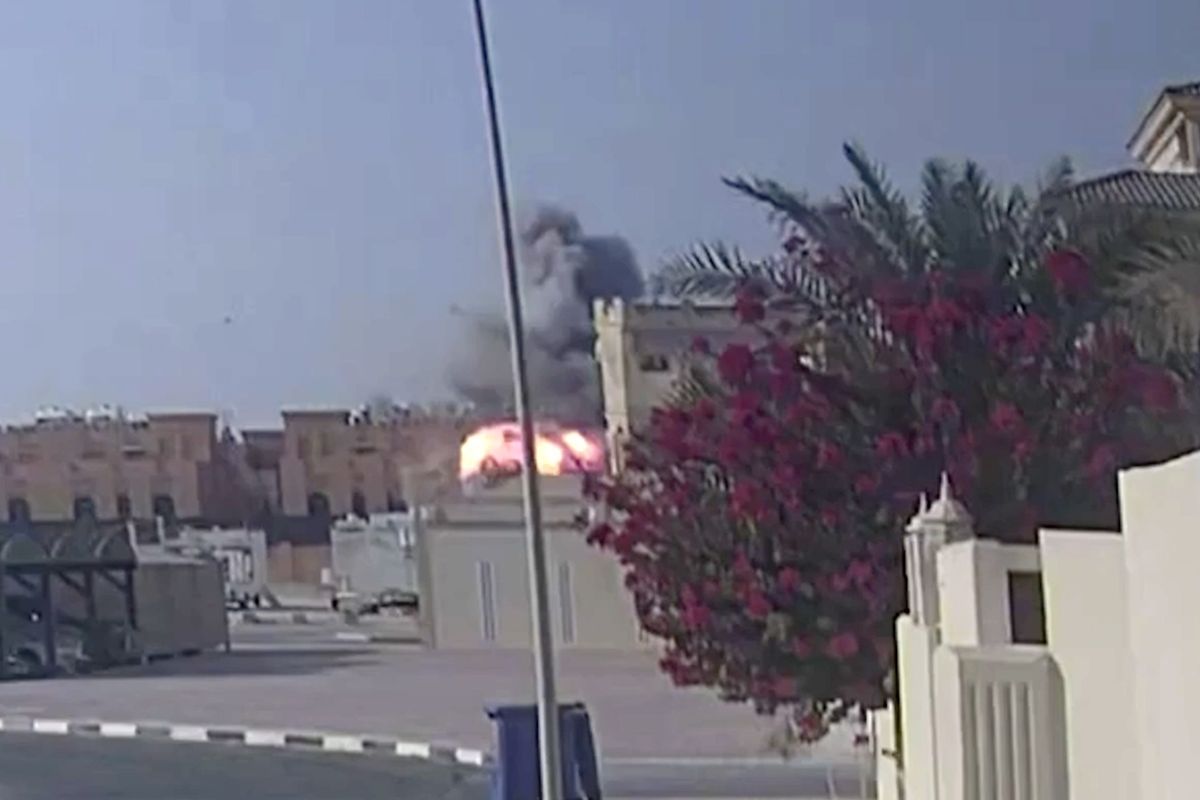CIPHER BRIEF REPORTING -- Recent U.S. strikes against Iran’s nuclear facilities propelled the 40,000 American forces in the region into the spotlight over fears of retaliation and sparked fresh debate about the scope and nature of their deployments.
Writing in The Washington Post, Dan Caldwell, a former Senior Adviser at the Department of Defense and an Iraq war veteran, and Jennifer Kavanagh, the Director of Military Analysis at Defense Priorities, a defense-focused think tank, argue that the recent strikes “should be a wake-up call” for the White House about the role and vulnerability of U.S. troops in the region. “U.S. military forces in the Middle East bring more risks than benefits, and it’s time to get most of them out for good.”
Other experts think that’s a shortsighted approach, given the range of missions those forces carry out in the region.
“There's an assumption underlying that general argument of, ‘Well, if only the United States was to pull out of the region, suddenly the world will be a better place’ – I don't buy it,” Raphael Cohen, Director of the National Security Program at the RAND School of Public Policy, told The Cipher Brief. Cohen and others see particular value in the rapid-response capability the U.S. bases provide in a volatile region.
General Frank McKenzie, who oversaw U.S. forces in the Middle East as the head of U.S. Central Command from 2019 to 2022, told The Cipher Brief that while a reevaluation of the force posture was needed, a rapid drawdown would harm U.S. interests.
The Cipher Brief Threat Conference is happening October 19-22 in Sea Island, GA. The world's leading minds on national security from both the public and private sectors will be there. Will you? Apply for a seat at the table today.
“It certainly serves our interest to maintain a presence in the region,” Gen. McKenzie said. “And it certainly serves the interests of the Gulf states and other states as well that we be there in order to give them additional stability as they confront the threat from Iran.”
The focus on the U.S. presence in the Middle East comes early on in an administration that has indicated it may want to pivot from a focus on the region and shift attention toward Asia. But testifying just prior to the U.S. attack in Iran, Vice Adm. Brad Cooper, who was confirmed just this week as the new CENTCOM commander, said he sees no reason to draw down now.
“Our approach today is to assess and move forward on a conditions-based assessment,” he told the Senate Armed Services Committee. “I think, given the dynamic nature of what's happening today, that assessment in the future could look different than it does today, perhaps, and if confirmed, I'm committed into my tenure to continue to assess what our posture needs to look like and make recommendations.”
What are U.S. Troops Doing There
For decades, the United States has kept tens of thousands of military personnel in the Middle East, spread across bases from Syria to the Persian Gulf.
Among the largest are the Al -Udeid Air Base in Qatar, home to the 379th Air Expeditionary Wing and the forward headquarters of CENTCOM – with some 10,000 troops – and the U.S. Navy’s Fifth Fleet base in Bahrain, where 9,000 Americans are deployed. 13,500 U.S. service members are stationed at bases in Kuwait and another 5,000 in the United Arab Emirates (UAE). Maritime deployments that followed the Hamas massacre in Israel on October 7, 2023, added a few thousand troops to the overall number. Finally, roughly 3,000 Americans are stationed at bases in Iraq and Syria, vestiges of the anti-ISIS operations that were carried out a decade ago.
Proponents of the current force posture see a smart distribution of troops that matches U.S. interests and furthers several key missions: the ability to respond quickly to crises; countering the Iranian threat; bolstering the defense of Israel; helping secure maritime commerce in the Red Sea and the Strait of Hormuz; maintaining U.S. relations with key Gulf allies; and ensuring that ISIS and other groups do not reconstitute themselves and threaten U.S. interests.
“There are multiple missions at play,” Cohen said, beyond the current operations against Iran. “Some of this is a legacy of the global war on terrorism. We have soldiers in Syria and Iraq, doing primarily counter-ISIS missions, some stabilization missions as well. But we also have the major air bases in Bahrain for the Air Force and the Navy, managing air operations and the naval forces in the region. And what that means in practice, is we are concerned about the free flow of commerce through places like the Strait of Hormuz, and making sure that the Houthis don’t interfere with global maritime traffic there as well.”
Those arguing for a drawdown say that a force of 40,000 is far too costly, and that the stated missions are either outdated or could be accomplished with a much smaller number of troops.
“My longer-term view – even before the Iran strike – of the forces in the Middle East has been that when you have 40,000 forces in a region, anything that happens in that region implicates the United States, even things that actually aren't in U.S. interests,” Kavanagh, the Defense Priorities director, told The Cipher Brief.
“To the extent that we can get those forces out and limit unnecessary entanglements, I think that would be a smart move,” she said. “And that doesn't necessarily mean that you could never operate in the Middle East if there were actually a threat. Air power and naval power is something that's very mobile, and if you had the support of the Gulf countries, you could operate from those bases again.”
The war against ISIS
Officially, U.S. troops in Iraq and Syria serve as part of Operation Inherent Resolve, which began as a U.S.-led coalition in 2014 to dismantle the Islamic State (ISIS). Although that campaign was declared a success in Iraq (in 2017) and in Syria (2019), the U.S. maintains nearly 3,500 troops in the two countries.
Those bases are also considered the most vulnerable to outside attack, and well before the recent U.S. and Israeli strikes against Iran, analysts and policymakers were questioning the wisdom of keeping them there.
After Israel launched its war on Hamas in October 2023, these bases – along with a smaller outpost in Jordan – were attacked hundreds of times by rocket strikes that reportedly caused dozens of traumatic brain injuries among U.S. troops. In January 2024, three Americans were killed and dozens were injured at the small “Tower 22” base in Jordan. As The Cipher Brief reported then, the deadly strike prompted calls for ending the Iraq and Syria deployments.
Bernard Hudson, a former director of counterterrorism at the CIA, told us then that U.S. troops in those countries were “folks in harm’s way who can’t be protected and are surrounded by Iranian elements in both countries.”
Today, the case for staying in Syria and Iraq imagines a different nightmare: the Americans leave, and conditions are restored for a resurgent ISIS that could do more damage in the region and beyond.
“I would argue that the fight against ISIS still goes on,” Gen. McKenzie said. “We don't actually do that fight ourselves, but we do support our partners both in Iraq and in Syria who continue to conduct operations against ISIS, which is now newly flourishing based on the turmoil in Syria.”
Cohen concurred. “ISIS is beaten down,” he said. “It is not gone, though. And the concern is if you begin to take forces away, ISIS will sprout back up. There are also concerns that if we pull out, particularly out of Syria, we will risk abandoning the Kurds, who've been a long-time partner. So, there's an argument for keeping troops there for a host of both counterterrorism reasons, but also for regional stability issues.”
Kavanagh countered that the threat to the U.S. was minimal, and not worth the investment in U.S. military force.
“ISIS is not a threat to the United States – at least not the ISIS that's operating in the Middle East,” she said. “Some people argue that ISIS-K is becoming a more global threat, but they're not in Iraq and Syria. And our intelligence community has been very effective at uncovering plots before they happen. So, I'm not convinced that you need a military presence to protect the United States from that threat.”
The Defense Department has been conducting a “posture review” of the Iraq and Syria deployments for more than a year. The Iraq Higher Military Commission, which was tasked with preparing a U.S. withdrawal plan from that country, hasn’t met since September, according to Defense One. Recently, Maine Senator Angus King returned from a visit to Iraq and said that officials there had asked for the American troops to remain.
“They have an election coming up this fall, and that's been one of the significant dangers,” Sen. King said, referring to potential threats from Iran-backed militias in Iraq. “It seems to me, given the renewed volatility…it’s not a good time to be drawing down our forces, because they are viewed as stabilizing forces in all of those countries in the Middle East.“
A rapid-reaction force – and the costs
Many experts say that the brief war with Iran – and the tensions that linger in its aftermath – are only the latest examples of a longstanding reality: crises in the Middle East come with regularity. And that, they say, is reason enough for maintaining the American air and naval bases in the Gulf states.
Proponents of the U.S. posture also note that those Gulf allies want the Americans there. The U.S. has mutual defense agreements and commitments with Qatar, Kuwait, and Bahrain. An abrupt exit, they argue, could undermine relationships with those countries.
“There's a geopolitical bent here in that the UAE, Qatar, Bahrain, they all value having a U.S. presence in the region,” Jason Campbell, Senior Fellow at the Middle East Institute, told The Cipher Brief. “It provides them both a certain level of added security from Iran, as well as additional access for their respective militaries to training and certain types of equipment that are of use to them. So, there are both security and geopolitical reasons for the presence in this part of the world.”
Detractors point to the costs – particularly of the larger bases in the Gulf. Sustaining U.S. forces in the Middle East is expensive, north of $20 billion per year. Kavanagh and Caldwell argue that U.S. personnel in the region require more extensive defenses than those based at home, including hardened facilities and advanced air defenses, to protect them from Iranian-backed drone and missile attacks.
Meanwhile, each uptick in tensions has meant shifts to a high-alert status that carry their own costs. When the U.S. made the decision to strike Iran, most of the aircraft at the al-Udeid base in Qatar were moved out, and ships stationed at the U.S. naval base in Bahrain were sent out to sea as a security precaution.
“There is a heightened level of threat there,” Campbell said. “They'll move some of their naval ships out of Bahrain and out to sea to keep them safer…These are typical things we see, leading up to and enduring periods of tension in the region.”
Ultimately, none of those measures mattered much in the recent war; the Iranians were clearly not interested in escalation, and their public retaliation – for now at least – has been limited to a single well-telegraphed strike against the Al-Udeid base, which President Trump said had come with advance warning.
But Caldwell and Kavanagh argue that the costs and the vulnerability of these bases alone make the case for a drawdown, or at least a consolidation of U.S. forces in the region to one or two locations.
“The ‘12-Day War’ fortunately did not cost any American lives,” Caldwell and Kavanagh wrote in the Post, “but it highlighted our vulnerabilities in the region and underlined how our existing force posture was superfluous to achieving our aims. The war’s end provides an opportunity for the United States to do what it has tried and failed to do for the better part of a decade: rationalize and downscale its presence in the Middle East.”
What comes next
All the past calls for a drawdown of American military power in the region ultimately ran into the same roadblock: It’s hard to disengage from the Middle East.
President Donald Trump ran for a second term on a foreign policy platform that would decrease American involvement in the Middle East and pivot towards growing challenges in the Indo-Pacific. He referred to himself as the “candidate of peace,” with promises to extricate the U.S. from entanglements in the region. He may still do so; but like many of his predecessors, he has found it difficult to stay out of the region’s turbulence.
“I'm optimistic that once things stabilize, at least some of the air and naval power will move out of the region, because I do think there are strong voices in the Pentagon and elsewhere who really would like to concentrate more on Asia,” Kavanagh said. “And you can't do that when all your air and naval assets are tied up in the Middle East.”
Even those experts who support the deployments say they welcome the discussions about their future.
“There's certainly debate to be had for the number of installations required,” Campbell said. “How many forces should indeed be there and what specific purpose should they serve? I think those are all fair questions, but again, the geopolitical costs of removing forces completely from the region could be higher than many realize.”
Campbell added that a complete damage assessment of the strikes against Iran – which is not yet complete – will likely dictate the way forward, and that until then, there is a “near-to middle-term utility of having forces and resources in the region just from a more operational standpoint.”
Cohen agrees, noting that despite Trump’s claim that the nuclear sites in Iran had been “obliterated,” questions remain about the damage done and what may come next.
“There's an open question about how much destruction we actually did to the nuclear program with that strike,” Cohen said. “And if you were to have a more sustained [U.S.] offensive, and if you actually wanted to do something somewhat larger that would actually have potentially a more permanent effect, you would need a bigger operation.” And that, he said, would surely involve the American bases in the Gulf.
Gen. McKenzie, the former CENTCOM commander, said he welcomes the coming “posture review,” and the overall debate about U.S. forces in the Middle East.
“That's a national policy decision that we're going to have to make,” he said. “How much do we want to leave in there? It's a careful calibration. You may not need as much as you've got right now, but you need the ability to flow them back in very quickly if you elect to pull forces out.”
Ultimately, he said, “We could leave the region, we could certainly do that, and that's talked about fairly frequently.” But he added that in the short term, that would hurt the U.S. deterrent effect against Iran, the ability to secure safe maritime commerce, and the relationship with those Gulf allies.
“I think that's the thing to cover when we look at why are our forces there, what effects do they give, what effects do we derive from the fact that they're there – I think those are all useful things. All of those things are very much in our national interest.”
Are you Subscribed to The Cipher Brief’s Digital Channel on YouTube? There is no better place to get clear perspectives from deeply experienced national security experts.
Read more expert-driven national security insights, perspective and analysis in The Cipher Brief because National Security is Everyone’s Business.













